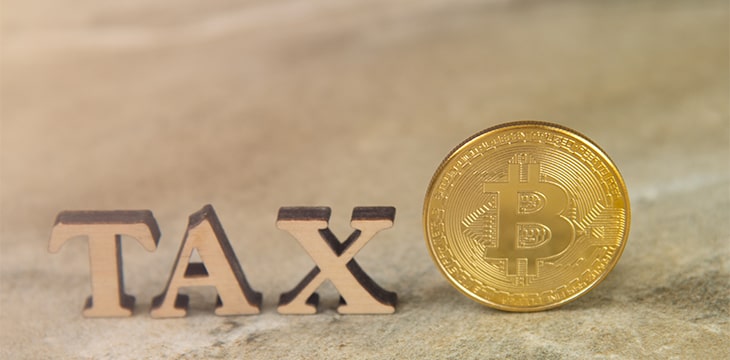|
Getting your Trinity Audio player ready...
|
Nirmala Sitharaman, the Finance Minister of India, announced last week a digital currency tax rate of 30% as part of the Union Budget 2022. Immediately afterward, Aditya Singh, the founder of the YouTube channel “Crypto India,” created a petition on change.org that has been signed by 60,000 people at the time of writing and is steadily growing.
The petition put forth requests of the Indian government, including:
- Do not treat the digital currency industry like people who gamble or play the lottery.
- Reduce the 30% digital currency tax rate to align with stock market tax rates.
- Reduce the 1% Tax Deducted at Source (TDS) to 0.05%.
- Allow loss set-off and carry forward because digital currency markets are volatile and new.
- Include exchange fees, interest payments, and royalty payments on NFTs in the cost of acquisition.
Singing a similar tune is Nigel Green of deVere Group, one of the world’s largest independent financial advisory, asset management, and fintech organizations. “It’s just too high,” he said. “I imagine that many investors [to avoid the 30% tax] will not withdraw assets from government banks and will sell on peer-to-peer platforms,” he added.
Acknowledging that the government didn’t outrightly ban digital currency assets, Green stated that the proposed tax rate is still steep and unfair.
It is not uncommon to see many different responses and opinions following an announcement of new regulation in India. On the more optimistic side, many entrepreneurs who own startups that use blockchain technology are relieved and overjoyed with the announcement.
“They didn’t ban it at least,” said an avid digital currency investor on a Telegram group Blockchained India that has over 3,000 members. Kumaraguru Ramanujam, the founder of Block Review and Bitcoin Association ambassador for India, remarked: “In cricket parlance, we would call this a masterstroke. As the finance secretary put it, ‘Crypto assets are neither illegal nor encouraged.’ Charging a 1% TDS brings all crypto trading activity into the books—this is a great move.”
Mohit Kumar, an ardent long-term investor of digital currencies in Delhi, laughed when asked about it, commenting, “Honestly, crypto did a backdoor entry in India through [Union] Budget 2022. And there is no going back now. I don’t care about the 30% slab as I am holding crypto for a long-term vision, and by that time, I am expecting a lot of changes in tax slabs, so let’s chill. The good thing is that it is not banned.”
The above statements represent polar opposite views of the tax rate. Before continuing, let’s digress a bit and look at the income tax system of India, which, as with many complex systems, is the subject of much misunderstanding. The topic is more complex than the stereotype that millions of Indians hide their income and evade paying taxes. It is not entirely true. You have to understand that India’s income tax structure is designed to allow only a tiny percentage of people to pay income tax. A significant set of Indians are exempt from income tax because their income is too low to pay. Secondly, Form 26AS, a consolidated annual tax statement showing the details of tax deducted at source—as well as tax collected at source, advance tax paid by the assessee, and self-assessment tax—is not a very robust system and does not function as expected.
Let’s check back in with Kumar, who has been investing in equities for the last 10 years and has not paid a single rupee (INR) in taxes for any profits made on equities whatsoever. Is he deliberately evading them? “No,” he responded, adding that India’s tax system does not even record or track equities at this point.
“Why will I or anyone voluntarily pay taxes made on equities?” he asked. “In India or the U.S., no one pays taxes voluntarily. The government has to have a system in place to track asset gains without fail. Therefore, in my opinion, the Indian government primarily needs a robust system to report/track existing sources of income. Developing a tool to track crypto profits will take a long time.”
He told CoinGeek that implementing anything new in India takes a while, and tracking swing traders seems to be nearly impossible for the government. “They won’t be able to track them. The exchanges will be required to report each transaction and the rate of exchange in a crystal-clear manner, and the government might do it or might not, time shall tell,” he said.
Although the digital currency tax rate was revealed during the Union Budget speech, the India Crypto Bill that Indians have been anticipating for over a year was still not announced. According to Ramanujam, “The current tax system buys government enough time to work on the Crypto Bill, which I think they will model after looking at other countries.”
Vijay Roy, the Business Editor at the Tribune Group of Newspapers, Chandigarh, called the announcement a great move, sounding optimistic about the promising future of digital currencies in India. “Let’s see what the Crypto Bill slated to be announced in May [2022] states,” Roy added.
Yes, the proposed digital currency tax rate seems high and equates the digital currency industry to gambling, lotteries, etc. Nonetheless, the recognition of digital currency as virtual digital assets has been welcomed by many. No one knows where the tax rate will stand at five years hence, but if history has taught us anything, no country withdraws a high tax slab once it’s on the books.
I am not on either side because I observe trends and research facts, only to explore the next ones to deliver unbiased and valuable content. Will the burden of implementing these taxes be shouldered by the exchanges, government, or investors themselves? We shall see. Time will tell how India figures out a way to track digital currency transactions and profits made on each of them.
I will leave you here with responses by people who capture the range of reactions to the breaking news of the Indian digital currency tax rate:
“I can’t believe people are really happy about it. Sounds like rationalization. It’s like saying to a condemned man, “I have some great news! You are not going to be drawn and quartered, just beheaded. It’s the marginally better option of two bad ones,” said U.S.-based entrepreneur “John.”
“I think it’s a good compromise versus completely banning cryptos. Even in the U.S, the government will regulate more than just a matter of time,” said IT professional Rahul Prabhakar.
“From what I am understanding, it sounds like an amazing move. 30% anyway exists as the highest tax bracket over INR 15lakh. TDS of 1% applies for transactions over INR10,000, so micropayment applications needn’t worry about this as transactions are below INR10,000. We must only care about the net profit/loss made at the end of the year in crypto, which is isolated in deductions from rest of income, and cannot be carry-forwarded, which are both acceptable,” said India-based entrepreneur Rohan Sharma.
“Don’t wait for the governments to catch up on cryptocurrency. World wealth is shifting into the top currencies. Hold a percentage of your wealth in cryptocurrency for a wealthier future,” said Business Intelligence analyst Chirag Sharma.
Watch: CoinGeek New York presentation, Micropayments for the World: APIs, Tokens and Computation

 12-22-2025
12-22-2025 




